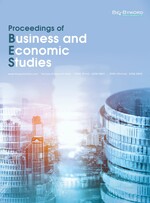Abstract
The enhancement of industrial green total factor productivity is pivotal for achieving high-quality and sustainable economic development. This study assesses China’s performance using the SBM-GML model, employing province-level panel data spanning from 2004 to 2020. Furthermore, we examine the influence of green finance and technological progress on industrial green total factor productivity using a spatial econometric model. The findings uncover that the relationship between the level of green financial development and industrial green total factor productivity follows a U-shaped curve. Initially, low levels of green financial development exert a suppressive effect on industrial green total factor productivity, proving ineffective in the short term. However, with the progression of green finance development, a positive and significant long-term impact on industrial green total factor productivity emerges. Moreover, technological progress demonstrates a noteworthy promotional effect on industrial green total factor productivity. The analysis delves deeper into revealing that industrial structure and environmental regulation intensity exhibit a significant negative relationship with industrial green total factor productivity. In contrast, both energy structure and education level showcase a substantial positive relationship with industrial green total factor productivity.
References
Qu X, Zhao Z, 2022, Research on Characteristic Factors and Multiple Promotion Paths of China’s Industrial Green Total Factor Productivity Based on fsQCA. Operations Research and Management Science, 31(6): 154–160. http://doi.org/10.12005/orms.2022.0196
Hailu A, Veeman T, 2000, Environmentally Sensitive Productivity Analysis of the Canadian Pulp and Paper Industry, 1959–1994: An Input Distance Function Approach. Journal of Environmental Economics and Management, 40: 251–274. https://doi.org/10.1006/JEEM.2000.1124
Jones R, Yoo B, 2011, Korea’s Green Growth Strategy: Mitigating Climate Change and Developing New Growth Engines. OECD Economics Department Working Papers, 2011: 798. https://doi.org/10.1787/5KMBHK4GH1NS-EN
Yin Z, Sun X, Xing M, 2021, Research on the Impact of Green Finance Development on Green Total Factor Productivity. Statistics and Decision, 37(3): 139–144. https://doi.org/10.13546/j.cnki.tjyjc.2021.03.030
Wang C, Wang L, 2023, Green Credit and Industrial Green Total Factor Productivity: The Impact Mechanism and Threshold Effect Tests. Journal of Environmental Management, 331(4): 1–8. https://doi.org/10.1016/j.jenvman.2023.117266
Lyu Y, Gu B, Zhang J, 2023, Does Digital Finance Enhance Industrial Green Total Factor Productivity? Theoretical Mechanism and Empirical Test. Environmental Science and Pollution Research, 30(18): 52858–52871. https://doi.org/10.1007/s11356-023-26057-7
Yuan B, Li C, 2018, Innovation-Driven Chinese Industrial Green Total Factor Productivity under Environmental Regulation, Industrial Economics Research, 2018(5): 101–113. http://doi.org/10.13269/j.cnki.ier.2018.05.009
Sun H, Zhang Z, Liu Z, 2022, Regional Differences and Threshold Effect of Clean Technology Innovation on Industrial Green Total Factor Productivity. Frontiers in Environmental Science, 10: 985591. https://doi.org/10.3389/fenvs.2022.985591
Cliff A, Ord K, 2010, Testing for Spatial Autocorrelation Among Regression Residuals. Geographical Analysis, 4(3): 267–284. http://doi.org/10.1111/j.1538-4632.1972.tb00475.x
Anselin L, 1988, Spatial Econometrics: Methods and Models. Kluwer Academic Publishers, Dordrecht, 159–160.
